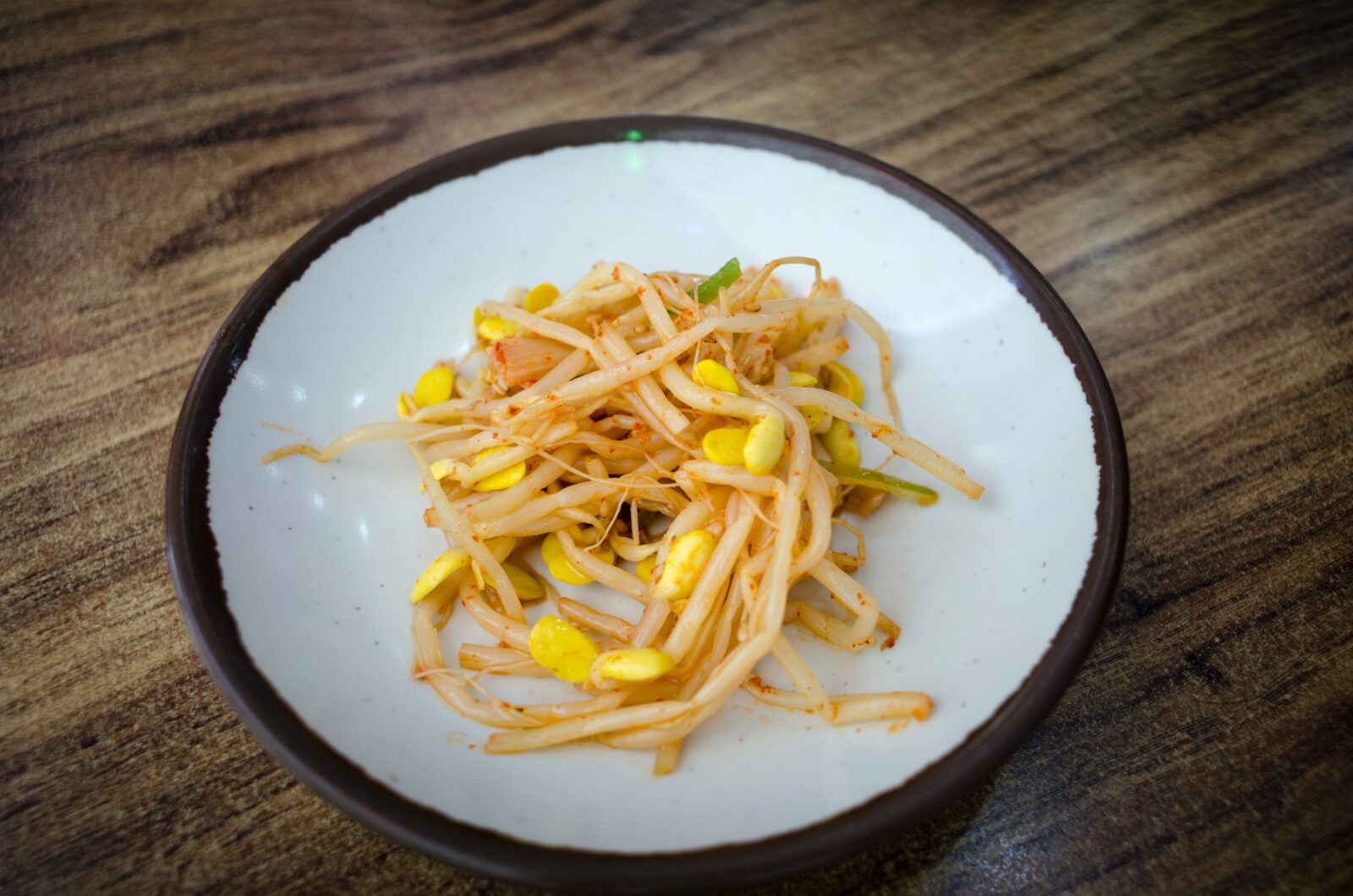From tofu to tempeh, the soybean has many culinary applications and nutritional benefits. If you think that’s impressive, just wait until you learn about its sprout!
Soybean sprouts add a satisfying crunch to salads and sandwiches, but did you know they’re also good for your health?
Let’s see how soybean sprouts go far beyond a garnish!
What are Soybean Sprouts?
Soybean sprouts are the thin, yellow/white structures that connect growing soybeans to nutrients in the ground. Soybean sprouts can be consumed cooked or raw and have been a staple of the Chinese, Korean, and Japanese culinary scenes for centuries.
How Do Soybean Sprouts Grow?
Part of soybean sprouts’ appeal is that they grow year-round. They are particularly popular in parts of the world where seasonal vegetables were not traditionally available during winter, such as Asia. The act of growing soybean sprouts is referred to as “sprouting soybeans.”
Soybean “sprouters” start by rinsing soybeans in cold water and soaking them for at least eight hours. The soybeans are then placed in a planter with small holes in the bottom for drainage. They cover the planter with a black cloth to keep the light out and keep the soybeans moist, adding water to the soybeans every few hours. At the end of the six days, the soybean sprouters rinse the sprouts several times and drain them before storing them in the refrigerator, where they remain ready for use.
What are the Different Types of Soybean Sprouts?
Whereas there is only one type of soybean sprout, variations in soybean seeds including adaptation, differences in seed coat color, hilum (the point of attachment between the seed and sprout) color, leaf shape, flower color, maturity, and seed composition abound.
Just as U.S. soybean farmers try to optimize their crop, savvy soybean sprouters carefully evaluate and replicate the most desirable sprout qualities, opting for soybeans engineered for sprouting. They choose soybeans containing raw, unpasteurized seeds that absorb water quickly, and they prioritize soybeans with small-to-medium-sized seeds due to their superior germination rates, more uniform germination, and superior tasting sprouts.
What are the Health Benefits of Eating Soybean Sprouts?
Soybean sprouts are whole foods, meaning they are minimally processed. Thus, they retain many of the naturally occurring vitamins and nutrients that help them support critical bodily systems and processes.
- Source of Key Vitamins and Minerals: Vitamins and minerals in soybean sprouts include Vitamin C, iron, and folate. Vitamin C is vital to your body’s healing process and helps it combat free radicals associated with chronic diseases. Iron supports circulatory health and folate helps the body form red blood cells. It is especially important to consume folate during pregnancy as it can help prevent birth defects involving the neck and spine.
- Source of Protein: Containing all nine essential amino acids, soy sprouts are a source of plant protein. Protein can help you stay full longer, which aids in weight management. What’s more, a recent clinical trial found that consuming soy protein can help improve skin health by minimizing wrinkles and pigmentation while promoting hydration.
- Support Cardiovascular Health: Speaking of protein, soy is the only plant protein that carries the US Food and Drug Administration’s (FDA) heart health claim. Soybean sprouts, in particular, are a significant source of isoflavones, a plant compound associated with a lower risk of coronary heart disease.
- May Reduce Symptoms of Menopause: Isoflavones have demonstrated benefits for women going through menopause. Studies show isoflavone supplements can alleviate common menopause symptoms, such as hot flashes.
- May Help Prevent Certain Cancers: Soy sprout consumption may be linked with reducing the risk of developing certain types of cancer.
How to Eat More Soybean Sprouts
With a mild flavor, soybean sprouts make a great addition to a variety of meals.
How to Eat Soybean Sprouts for Lunch
Though boiling soybean sprouts is recommended for optimal taste, soybean sprouts can be served cold or room temperature as part of a healthy and refreshing lunch.
Replace lettuce with soybean sprouts in your favorite salad to add a nutritious, Asian twist to an old standby. If you’re a fan of more traditional fare, you might want to try kongnamul guk, a classic Korean soup in which soybean sprouts are the star ingredient. Toss in mushrooms, fish, or other ingredients to maximize nutritional benefits.
How to Eat Soybean Sprouts for Dinner
Soybean sprouts are a key ingredient across Asian cuisines, leaving you many dinner options. Pair soybean sprouts with garlic in a satisfying Chinese stir fry. If you’re in the mood for Indian food, soybean sprouts can add nutrients and texture to a flavorful curry dish.
Where Can I Find Soybean Sprouts?
Soybean sprouts are not only versatile, but widely available. Soybean sprouts can be found at Asian specialty markets and mainstream American retailers, like Whole Foods alike. Feeling adventurous? You can purchase sprouting seeds on Amazon and sprout your own soybeans!
The Sprout We Can’t Be Without
We wouldn’t have soy without soybean sprouts. Beyond their essential nature, soybean sprouts are a tasty, nutritious, and versatile food in their own right. See our Soy Ingredient Index for more information on soybean sprouts and all the foods and non-food innovations that spring from them!
